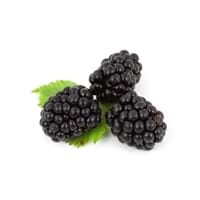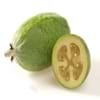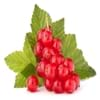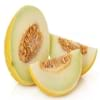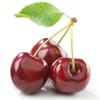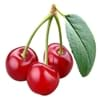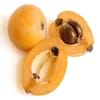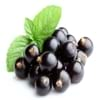Health Benefits
Anti depressant, Cancer prevention, Reduces nervous tension, Treatment of alzheimer's disease, Treatment of Lung disease
Cancer prevention, Heart care, Increases metabolic rate, Reduces stress, Treatment of dysentary, Treatment of skin Diseases
General Benefits
Digestive aid, Helps in weight loss, Improves blood circulation, Strengthens bones, Treatment of common cold
Digestive aid, Maintains healthy cholesterol level, Strengthens bones
Skin Benefits
Brightens and lightens complexion, Skin rejuvenation
Hydrates skin, Skin rejuvenation, Skin revitalization
Hair Benefits
Promotes longer and healthier hair, Protects hair
Promotes longer and healthier hair
Allergy Symptoms
NA
Facial muscle tension, Pressure in sinus, Respiratory congestion, Runny nose, Sneezing, Tingling sensation in wrist and face
Side Effects
Allergic reaction
Nausea, Vomiting, Might cause change of urine color
Best Time to Eat
As a snack in the late afternoon, Don't consume at night and before bed, Eat the fresh ones, avoid mixing with any other foods, don't eat after meal., Morning time (before lunch)
Best if taken as a breakfast (or empty stomach), As a snack in the late afternoon, Don't consume at night and before bed, Eat the fresh ones, avoid mixing with any other foods, don't eat after meal., Morning time (before lunch)
Vitamin A (Retinol)
Not Available
Vitamin B5 (Pantothenic Acid)
Vitamin C (Ascorbic Acid)
Vitamin K (Phyllochinone)
Calories in Fresh Fruit with Peel
Not Available
Calories in Fresh Fruit without Peel
Not Available
Calories in Frozen Form
Not Available
Calories in Canned Form
Not Available
Calories in Pie
Not Available
Season
Autumn, Winter
Spring, Summer
Varieties
Anatoki, Gemini, Kaiteri, Kakariki, Pounamu, Unique, Apollo, Den's Choice, Kakapo, Mammoth, Opal Star, Triumph and Wiki Tu
Prime Ark, Prime Jim, Illini Hardy, Kiowa, Shawnee, Apache, Arapaho, Chester, Hull, Natchez, Navaho and Triple Crown and Von
Color
Green
Purplish black
Inside Color
White
Magenta
Origin
Argentina, Brazil, Paraguay, Uruguay
Asia, Europe, North America, South America
Grows on
Not Available
Trees
Soil Type
Clay loam, Gravely loam, Sandy
Well-drained
Climatic Conditions
Cold, Warm
Dry, Warm to hot climate
Facts about
- Feijoa is called as "pineapple guava" in some countries.
- Feijoa tree is an ornamental plant that can also be used as hedge & windbreak.
- All parts of feijoa fruit are edible(skin is mostly discarded).
- There are around 2000 varieties of blackberries throughout the world.
- 80-85 degrees is the ideal temperature for its production.
- Leaves of blackberry tree are used to treat sore throats and mild inflammation of the gums.
Top Producer
New Zealand
United States of America
Other Countries
Australia, Azerbaijan, India, Japan, United States of America
China, New Zealand, Serbia, South Africa
Top Importer
China
United States of America
Top Exporter
New Zealand
Mexico
Botanical Name
Acca sellowiana
Rubus Fruticosus
Synonym
Feijoa sellowiana or Orthostemon sellowianus
Rubus Millspaughii or Rubus Laciniatus
Subkingdom
Tracheobionta
Tracheobionta
Division
Magnoliophyta
Magnoliophyta
Class
Magnoliopsida
Magnoliopsida
Family
Myrtaceae
Rosaceae
Species
A. sellowiana
Rubus fruticosus
Generic Group
Myrtle
Rose
Difference Between Feijoa and Blackberry
We might think that Feijoa and Blackberry are similar with respect to nutritional value and health benefits. But the nutrient content of both fruits is different. Feijoa and Blackberry Facts such as their taste, shape, color, and size are also distinct. The difference between Feijoa and Blackberry is explained here.
The amount of calories in 100 gm of fresh Feijoa and Blackberry with peel is Not Available and 43.00 kcal and the amount of calories without peel is 55.00 kcal and Not Available respectively. Thus, Feijoa and Blackberry belong to Low Calorie Fruits and Low Calorie Fruits category.These fruits might or might not differ with respect to their scientific classification. The order of Feijoa and Blackberry is Myrtales and Rosales respectively. Feijoa belongs to Myrtaceae family and Blackberry belongs to Rosaceae family. Feijoa belongs to Acca genus of A. sellowiana species and Blackberry belongs to Rubus genus of Rubus fruticosus species. Beings plants, both fruits belong to Plantae Kingdom.

